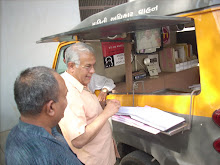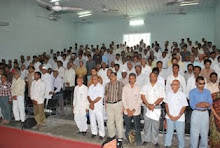Tribune India: Haryana: Saturday,
December 20, 2025.
Subhash of Haryana Soochna Adhikar Manch had filed an RTI application
Even as the state government has enacted the Haryana Contractual Employees (Security of Service) Act, 2024 to provide job security to contractual employees, the Chief Secretary’s office has no data regarding the number of employees who have got cover under the Act till September 2025, an RTI reply has revealed.
The Act had been enacted on December 6, 2024, and amended on April 9, 2025. It was aimed at ensuring stability to contractual, daily wage and Haryana Kaushal Rozgar Nigam Limited (HKRNL) employees. RTI activist Subhash of Haryana Soochna Adhikar Manch said the Chief Secretary’s office seems to lack the consolidated data regarding the employees covered under the Act.
However, in response to the specific question regarding the total number of employees covered under the Job Security Act, the reply stated that the Human Resource Department of the Chief Secretary’s office had issued a letter on August 18, 2025, to all Administrative Secretaries, HoDs, MDs and Chief Administrators of Boards and Corporations, Divisional Commissioners and DCs, directing them to upload details of daily wage and contractual employees fulfilling the conditions of the Act on an online portal.
The reply further stated that the portal has not yet been developed and is in the preparatory stage. In reply to another query, it stated that a committee was constituted for the development of online portal on August 6, 2025. The committee comprises the Joint Secretary, Human Resource-1, as Chairman, Senior Director IT (NIC) as Co-Chairman, Programmer T&A, and Superintendent HR-1, as members. The committee was required to submit the portal module to the Chief Secretary’s office by August 14, 2025.
The activist said it was evident from the RTI reply that the government had been slow in compiling the data of employees, who were to be covered under the Act.
Subhash of Haryana Soochna Adhikar Manch had filed an RTI application
Even as the state government has enacted the Haryana Contractual Employees (Security of Service) Act, 2024 to provide job security to contractual employees, the Chief Secretary’s office has no data regarding the number of employees who have got cover under the Act till September 2025, an RTI reply has revealed.
The Act had been enacted on December 6, 2024, and amended on April 9, 2025. It was aimed at ensuring stability to contractual, daily wage and Haryana Kaushal Rozgar Nigam Limited (HKRNL) employees. RTI activist Subhash of Haryana Soochna Adhikar Manch said the Chief Secretary’s office seems to lack the consolidated data regarding the employees covered under the Act.
However, in response to the specific question regarding the total number of employees covered under the Job Security Act, the reply stated that the Human Resource Department of the Chief Secretary’s office had issued a letter on August 18, 2025, to all Administrative Secretaries, HoDs, MDs and Chief Administrators of Boards and Corporations, Divisional Commissioners and DCs, directing them to upload details of daily wage and contractual employees fulfilling the conditions of the Act on an online portal.
The reply further stated that the portal has not yet been developed and is in the preparatory stage. In reply to another query, it stated that a committee was constituted for the development of online portal on August 6, 2025. The committee comprises the Joint Secretary, Human Resource-1, as Chairman, Senior Director IT (NIC) as Co-Chairman, Programmer T&A, and Superintendent HR-1, as members. The committee was required to submit the portal module to the Chief Secretary’s office by August 14, 2025.
The activist said it was evident from the RTI reply that the government had been slow in compiling the data of employees, who were to be covered under the Act.






























































































